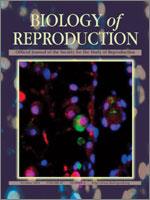Bidirectional communication between cumulus cells and the oocyte is necessary to achieve oocyte developmental competence. The aim of the present study was to examine the effects of recombinant human bone morphogenetic protein 15 (rhBMP15) and follicle-stimulating hormone (FSH) supplementation on bovine cumulus-oocyte complex (COC) metabolism during maturation. Bovine COCs were matured in the presence of absence of FSH, rhBMP15, or both for 23 h. The addition of FSH and rhBMP15 increased blastocyst development (without rhBMP15 and FSH, 28.4% ± 7.4%; with FSH and rhBMP15, 51.5% ± 5.4%; P < 0.05). Glucose uptake and lactate production was significantly increased by greater than 2-fold with FSH (P < 0.05), whereas rhBM15 supplementation did not increase these levels. rhBMP15 supplementation (regardless of FSH) significantly decreased ADP levels in COCs, leading to an increase in ATP:ADP ratios (P < 0.05). Indicators of mitochondrial activity and cellular REDOX, oxidized flavin adenine dinucleotide (FAD ) and reduced nicotinamide adenine dinucleotide (phosphate) (NAD(P)H), levels within the oocyte of COCs were significantly higher with rhBMP15 alone, whereas the presence of FSH diminished the rhBMP15 effect. Regardless of treatment, no changes in REDOX state (FAD :NAD(P)H). The significant increase in FAD and NAD(P)H in COCs with rhBMP15 was mediated via cumulus cells, because no differences were found in denuded oocytes cultured in the presence or absence of FSH, rhBMP15, or both. The present study demonstrates that a principal metabolic consequence of FSH supplementation of COCs is to alter the glycolytic rate of cumulus cells, whereas that of rhBMP15 is to regulate oxidative phosphorylation in the oocyte, even though it acts via cumulus cells. These effects are tempered when FSH and rhBMP15 are present together but, nonetheless, yield the best oocyte developmental competence.
How to translate text using browser tools
15 August 2012
Metabolic Differences in Bovine Cumulus-Oocyte Complexes Matured In Vitro in the Presence or Absence of Follicle-Stimulating Hormone and Bone Morphogenetic Protein 15
Melanie L. Sutton-McDowall,
David G. Mottershead,
David K. Gardner,
Robert B. Gilchrist,
Jeremy G. Thompson
ACCESS THE FULL ARTICLE

Biology of Reproduction
Vol. 87 • No. 4
October 2012
Vol. 87 • No. 4
October 2012
bone morphogenetic protein 15
cumulus-oocyte complex
FSH
growth factors
in vitro oocyte maturation (IVM)
metabolism
oocyte maturation




